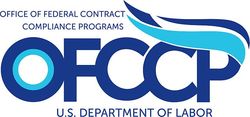 By Mark Wiletsky
By Mark Wiletsky
An estimated 437,000 workers who do not currently receive paid sick leave will become eligible for up to seven days of annual paid sick leave under recently released proposed regulations from the Department of Labor (DOL). Last fall, President Obama issued Executive Order 13706 to require federal contractors to provide paid sick leave to employees who work on covered contracts. If you are or expect to be a federal contractor, here is what you’ll need to know about the proposed rules.
Accrual of Paid Sick Time
For every 30 hours worked on, or in connection with, a covered contract, employees must accrue a minimum of one hour of paid sick leave, with a maximum cap of at least 56 hours. Contractors must calculate each employee’s accrual at the conclusion of each workweek. Alternatively, if a contractor does not want the trouble of calculating accruals, the proposed rules allow a contractor to provide an employee with at least 56 hours of paid sick leave at the beginning of each accrual year.
Contractors must provide written notification to covered employees about the amount of paid sick leave that the employee has accrued but not used. Notifications are required at the following times:
- at least monthly
- each time the employee requests to use paid sick leave
- upon separation of employment
- upon reinstatement of paid sick leave, and
- whenever the employee asks for this information (but no more than once a week).
Notifications of sick leave benefits that accompany paychecks or are accessible online will generally satisfy this requirement.
Use of Paid Sick Leave
Under the proposed rules, an employee may use paid sick leave for an absence resulting from any of the following:
- the employee’s medical condition, illness or injury (physical or mental)
- for the employee to obtain diagnosis, care, or preventive care from a health care provider for the above conditions
- caring for the employee’s child, parent, spouse, domestic partner, or another individual in a close relationship with the employee (by blood or affinity) who has a medical condition, illness or injury (physical or mental) or the need to obtain diagnosis, care, or preventive care for the same
- domestic violence, sexual assault, or stalking, that results in a medical condition, illness or injury (physical or mental), or causes the need to obtain additional counseling, seek relocation or assistance from a victim services organization, take legal action, or assist an individual in engaging in any of these activities.
Definitions for these terms are included in the proposed regulations. Contractors must permit employees to use their accrued paid sick leave in increments of no greater than one hour.
Leave Requests and Medical Certifications
Employees must be permitted to make a verbal or written request to use paid sick leave. If leave is foreseeable, the request must be made at least seven calendar days in advance. When not foreseeable, the request must be made as soon as practicable. Any denial of leave must be provided in writing to the employee, with an explanation for the denial.
Contractors may only require a medical certification issued by a health care provider (or other documentation related to domestic violence) if the employee is absent for three or more consecutive full workdays.
Carryover and Reinstatement Of Unused Leave
Contractors are permitted to cap the amount of paid sick leave that employees may accrue to 56 hours each year. But, contractors must carry over unused, accrued paid sick leave from one year to the next, with a cap of at least 56 hours of accrued paid sick leave at any one time. In addition, under the proposed regulations, contractors must reinstate an employee’s unused, accrued paid sick leave if the employee is rehired by the same contractor or a successor contractor within 12 months after a job separation. Contractors will not be required to pay out any unused, accrued paid sick time at the termination of employment.
Interaction With FMLA and Existing Company PTO Policies
Paid sick leave under these regulations may run concurrently with Family and Medical Leave Act (FMLA) leave but it does not otherwise change a contractor’s obligations to comply with the FMLA. In other words, if an employee is eligible for time off under the FMLA, the contractor must meet FMLA requirements for notices and certifications regardless of whether the employee is eligible to use accrued paid sick leave.
For contractors with an existing paid time off (PTO) policy, the policy will meet the requirements of the proposed regulations if the paid time off policy satisfies all the obligations under the proposed rules. But, if it does not meet all of the requirements under the regulations, such as not permitting an employee to use paid time off for reasons related to domestic violence, sexual assault, or stalking, then the PTO policy would not suffice. In such cases, the contractor would have to either amend its PTO policy to make it compliant, or separately provide paid sick leave under the proposed regulations in addition to its PTO.
Covered Contracts and Employees
The Executive Order applies to new contracts and replacements for expiring contracts with the federal government that result from solicitations (or awards outside the solicitation process) issued on or after January 1, 2017. It essentially applies to four major categories of contracts:
- procurement contracts for construction covered by the Davis-Bacon Act
- service contracts covered by the McNamara-O-Hara Service Contract Act
- concessions contracts, and
- contracts in connection with federal property or lands and relating to offering services for federal employees, their dependents, or the general public.
Employees covered by the Executive Order, and therefore entitled to paid sick leave, include any person performing work on, or in connection with, a covered contract. There is a narrow exclusion for employees who perform work “in connection with” covered contracts but who spend less than 20 percent of their hours in a particular workweek in connection with such contract work.
Next Steps
Interested parties and the general public may submit comments on the proposed regulations on or before March 28, 2016. The DOL then will review the comments and decide whether to make any revisions before issuing a final rule sometime before the end of this year.
As you can see, many of the requirements of these proposed regulations differ from what we typically see in an employer’s sick leave or PTO policy. Consequently, employers who expect to seek or renew federal contracts after January 1, 2017 should review their existing sick leave and/or PTO policies to determine what changes may be required in order to comply with the proposed regulations. The devil is in the details on this one so don’t wait until the last minute to get your policies and procedures in place.
Click here to print/email/pdf this article.




